Storm-ready Roofs, Smarter Materials - PODCAST TRANSCRIPT
May 13, 2025 at 3:00 p.m.Editor's note: The following is the transcript of a live interview with Brian Davis from Brava Roof Tile. You can read the interview below or listen to the podcast.
Intro: Welcome to Roofing Road Trips, the podcast that takes you on a thrilling journey across the world of roofing. From fascinating interviews with roofing experts to on-the-road adventures, we'll uncover the stories, innovations and challenges that shape the rooftops over our heads. So fasten your seat belts and join us as we embark on this exciting roofing road trip.
Karen Edwards: Hello everyone and welcome to another episode of Roofing Road Trips from RoofersCoffeeShop. My name is Karen Edwards and today we are going to be talking about some of the unique challenges of roofing in the Southeastern US. And to help with this conversation, I'm thrilled to welcome Brian Davis from Brava Roof Tile. Brian, welcome.
Brian Davis: Hey, Karen. Thanks for having me.
Karen Edwards: Yeah, thanks for being here. For those who don't know, can you please just introduce yourself? Tell us a little bit about what you do there at Brava?
Brian Davis: Yeah, sure. I am the Vice President of Technical Services here at Brava Roof Tile. I lead a team of five field service reps around the United States, as well as a manager that manages them. Our role is to make sure our products perform well in the field. We provide all kinds of technical support to contractors, homeowners and distributors nationwide.
Karen Edwards: And for those who might not know, can you please tell us a little bit about Brava Roof Tile?
Brian Davis: Yeah. Brava is located in Washington, Iowa. We have one location now; looking to expand. We've been around for close to 20 years now. We make compression molded synthetic slate, shake and Spanish barrel tile.
We have very little waste in the manufacturing space. So every tile that is run through our manufacturing process, all the scraps that come from that process are re-grinded and put back into the same process to make new product. So we have recycled content, post-manufacturing content, post-industrial. We also have post-consumer recycled content. We like to have that recycled content in there for lead credits. We think we are doing the right thing. If someone is replacing a roof, we have a program where we can recycle that roof material after it's done with its full life cycle back into our manufacturing process and making new tiles. So it's a full circular recyclable product.
Karen Edwards: Nice. Okay. Thanks for sharing that. So let's talk now a little bit about the Southeastern US. There's a lot of unique challenges. We've got a lot of coastline. We've got a lot of high winds, hurricanes, tropical storms. It's hard to stand up against those elements sometimes as a roof. So let's talk about what contractors are up against when dealing with these extreme weather events.
Brian Davis: Yeah. Yeah. Roofing in the Southeast comes with its challenges. There's always going to be the next big hurricane. Last year there was Hurricane Helene, Hurricane Milton that came through, that really had some widespread destruction.
So we want to make sure that we are not only ready to meet that demand for... It's not even replacing the material. At that point, there's widespread damage. You're going to be replacing entire roofs, not just repairing. There might be some repairs here and there, but it is a widespread replacement. So we want to make sure that we can meet tight timelines. You're going to have material that's going to be in demand at the distribution locations. So you want to make sure that you're ready to have those materials in place when a storm comes through so that you can be fast to make those repairs, make those replacements, so you can have those homeowners have a home that is not leaking or has enough damage where there's a blue tarp on it for a month. You want to be prepared that you have enough material on site in these locations, stocked, ready to go to be installed by our top tier contractors in those areas.
And not only the Southeast. You're seeing widespread destruction from wildfires in California, large hailstones and hail events in the Midwest. So it's just not Southeast. A lot of other areas have to be prepared for this as well, including in the Southeast, obviously with the hurricane and high wind events.
Karen Edwards: Right. Right. You touched on this briefly and we do have a talking point on here later, but I want to go there now because you mentioned when there's a lot of damage, when there's a severe weather event, you're replacing a lot of roofs, you're doing some repairs, but you're putting some new roofs on. So supply is always a challenge, right?
Brian Davis: Yes.
Karen Edwards: Everybody needs the materials at the same time. So can you talk more about the ways that Brava Roof Tile ensures that the product is available?
Brian Davis: Yeah. After a big storm, getting material on the ground and scrambling for material is a real problem. So we have stocking programs with our distribution partners within the Florida market. When the hurricane season is coming upon us, we want to make sure they're fully stocked and ready to go when a high wind event does occur. So we want to increase production capacity at the plant and we want to make sure we have enough products stocked at those locations to service the areas that are in need the quickest.
Karen Edwards: Okay. You also mentioned briefly about having products ready to be installed by a certified installer contractor. And so I want to talk a little bit about the system and the installation process and how that affects the durability of the roof and its resistance to this severe weather.
Brian Davis: Number one, we have certification requirements to become a craftsman contractor and within that, we have a preferred contractor program. Within that preferred contractor program, there's three levels. We have authorized, preferred and craftsman. They go through their various training programs.
At Bravo, we have level one training, which is an online self-paced training. Anyone can take it. Level two is an integration type of training, where we are integrating them with CompanyCam and making sure from start to finish, they are installing the product that we've designed correctly, because you can have a great product, but if it's not installed correctly, then it's not going to meet any of the performance criteria and it will potentially fail at some point. So if it's not installed correctly, that is a huge point. So we have installation guides available on our website. We have all kinds of resources that allow our contractors to install our product properly.
My team also goes on site. We'll do training events nationwide and regionally. We will partner with our distribution partners and hold training events in person, so they get that hands-on training with our products.
Karen Edwards: Nice. Because as we say, proper installation is going to help performance. But talk to me a little bit about the warranties that come with Bravo Roof Tile. And I'm sure you have to be certified to be able to offer a warranty, right?
Brian Davis: Well, we have two warranties. One, you do not have to be certified. It's a material defect. It's a fifty-year limited lifetime warranty. Like I said, anybody can install it and get the warranty. The main thing is to actually make sure the warranty is sent into us and registered, so you get that credit.
Within that warranty, we cover high-wind applications, so 90, 110 and 130. And then during those high wind applications, there are certain requirements you have to do. You have to make sure the exposure is set correctly; 10 inches on shake and slate, 13 on our Spanish profile. You have to make sure that you have the correct fastener type to get that 130 mile an hour high wind requirement. So we require either ring shank roofing nails or screws, depending on the profile type. So there are requirements around the warranty.
We also provide a ten-year UV resistant warranty. That's pretty unique to us. Not many of our competitors have that available on their warranty.
We also offer an endurance warranty. That's our newest warranty that includes workmanship and that's only available to our highest level contractors, which are our craftsman level contractors. That warranty also includes a set of requirements for installing near seawater. So if you're installing next to a body of ocean or a body of water that has salt, we require stainless steel fasteners in those locations.
There's also other requirements that we require for the workmanship warranty, but that's all included in some of the language in the warranty.
Karen Edwards: Excellent. Okay. Now, there is a program I want to mention because I think you guys are part of it and that's the Fortified program through IBHS, which is IOE's Insurance Institute for Business and Home Safety. They have a lot of insurance carriers that are members and they want to keep roofs on the homes, right?
Brian Davis: Correct.
Karen Edwards: Tell me about Brava's role in that and how contractors can offer a Fortified roof.
Brian Davis: Yeah. We've been actually pretty heavily involved in Fortified. We've partnered with Fortified. All of our products are now Fortified certified. So we submitted all of our products and code evaluation reports to Fortified and they reviewed them all. And we are glad to say that our products are Fortified certified, so you could use all of our products on a Fortified roof.
Fortified is really there to strengthen homes and they have specific requirements around that, meaning double layers of underlayment, increased fastening around the perimeter. When we do inspections, we are in alignment now with Fortified's checklist. So Fortified has their own checklist, which a contractor would go through, make sure they are following every single step of the checklist to have that really resilient roof assembly installed.
We also have the same checklist when we do our level two training. The contractor is basically following the same checklist to get the best quality install possible for their roof.
Karen Edwards: Excellent. Okay. I'd like you to talk a little bit about the advantages really of composite roofing material when compared to traditional materials, like concrete, shingles, slate.
Brian Davis: Sure. Our product is lightweight compared to traditional materials. So if you're talking about a traditional concrete tile, a traditional slate tile, our product is lightweight but still mimics the same design of the slate. They are compression molded out of an actual slate and a Spanish barrel tile and also a cedar shake. So the look and feel of them are very much the same, if not even better, in my opinion. We have the thickness. We pride ourselves on the thickness of our product.
So compared to a traditional material, it's very lightweight. That means you don't have the beef up the structure underneath. If you're tearing off a natural Spanish barrel tile and you're replacing it with one of our Spanish barrel tile, you don't have to do any extra measurements with the structure underneath.
Our product is low maintenance. It does not absorb water like some other natural materials. It also does not break. So if you take a Spanish tile or a piece of natural slate and you drop it on the ground, it's going to shatter. Our product is class 4 impact resistant, so you're not going to get any of that shattering, whether it be hail or some kind of other impact on that roof.
Karen Edwards: So if you can tell me, without giving away your secret sauce, why and how are Brava products manufactured to better withstand the harsh environments, the UV rays and the extreme weather that they're subject to?
Brian Davis: Yeah. I think we have a really robust engineering team that really focuses on material science, that makes our product more durable and easier to work with. So in the manufacturing process, we have compression molded tiles that allows us that flexibility to have a very durable product that can withstand impact, but also can withstand a UV resistance.
We use real mineral pigments that gives us a variegated look in our product. We also have a method to have structural ribbing on the backside of our product, which gives us also some rigidity and for impact resistance too.
Karen Edwards: When you say structural ribbing, so if I were to turn the product over, am I going to see lines? Is that what that means?
Brian Davis: If you're going to cut the product in half and you're going to have an exposed edge, we don't want to see that structural ribbing on the side, so it doesn't look natural. So anything on the rake edge or in a valley, we have solid pieces. But anything in the field of the roof, if you flip the tile over, it's not solid; there's airspace behind there with ribbing. And ribbing, we just say this is the structure of the piece.
So if you flip it back over to its exposed side, you're not going to see that ribbing coming through. It's going to have that natural look of cedar shake, slate or Spanish barrel, without any of those ribbing showing through. It's just for structure that take out some of the weight.
Karen Edwards: Yeah, I was going to say, why? What's it doing?
Brian Davis: It does not affect any of the performance whatsoever. Also, there's fastening pads that allow the fasteners to go through, that give it more rigidity and more wind uplift values. So when we go to test for high wind performance, our high wind uplift, the fasteners are going through those pads and so when the wind wants to pull up, it gives that structure to those areas, which gives us a high uplift value for each of our profiles.
Karen Edwards: Nice. In the Southeast US, it's always Miami-Dade standards that are kind of the holy grail and you guys have that, right?
Brian Davis: Yes. In the Southeast, we have Florida building code approvals. We have Miami-Dade NOAs. For Miami-Dade counties, we have Miami-Dade NOAs for our profiles and then Florida building code approvals, which are pretty stringent requirements to be approved for.
Karen Edwards: Sure.
Brian Davis: We are very proud that we have those. Those resources are available on our website as well. We also had code evaluation reports. All of our materials, all of our systems and assemblies, are tested for wind. We have class A fire rated assemblies, which is the highest rating that you can get, depending on your different underlayments underneath. It's tested as an assembly, not just the product. Like I said before, we have class 4 impact, which is the highest impact rating for a material type.
Karen Edwards: If a contractor is listening and maybe they're currently not offering Bravo roof tile to their customers and homeowners and they want to start, where should they go? What should they do? How do they get involved?
Brian Davis: Yeah, there's a few ways. One, our website. Our website is probably the best resource that a contractor can get started. We have all kinds of product data information on there, including technical resources. Literally, if you go to our webpage, go to resources, you can find all of our technical resources, including technical bulletins. We have our code evaluation reports. We have our installation guides and videos. We also have all of our training certificates.
There's also an area on our website... If you go to the technical services' portal, within the portal, it's level one, two and three training. We call these training or certification modules.
Level one, like I had mentioned before, is an online self-paced course. Takes about 45 minutes. Anybody can take it. You'll get the basic installation knowledge, keys to success, so you have a successful installation.
Level two is more of an integration where you are working with CompanyCam working with us. We can see from start to finish on a project from the time the material's on site to the time the project's completed and we'll work through every process to make every step of the way to make sure that installation goes correctly and it's installed per Brava specifications.
And then level three is really a partnership. That's for the craftsman level contractors. That's when we invite you out to check out our manufacturing process. We invite you out to the Washington, Iowa and now you are an actual partner with Brava.
Karen Edwards: I think it's fantastic the way that you are using technology through offering online courses, by partnering with CompanyCam to allow you to see what's going on. What other technologies do you have that may be helpful for contractors?
Brian Davis: Sure. That's a great question. Yeah. We also have this technology called text tech. It's an AI chatbot. It's pretty new to Brava. It's pretty cool.
So you go on to the technical services' portal and you'll see this little text tech chatbot come up in the bottom corner. And when you do that, you put your name and your phone number and then it automatically will be a contact in your phone. So if you have any questions... If you're onsite and you have a problem with, I don't know how to do this installer or what fastener should I use on my job, you just text that in there. It'll give you an answer within a minute. So if you need a quick answer to any question, that's the go-to technology that you should be using.
We also are working on a VR training program. That's in the works. That's coming soon, where trainers can put goggles on and be in a virtual reality environment, installing and training on Brava Roof Tile profiles.
Karen Edwards: Wow. Yeah, that's very cool. I love it. I mean, technology's here, right? We're using it all the time and having stuff at your fingertips, super important.
Brian Davis: Yeah. Brava wants to be on the cutting edge of technology when it comes to roofing, because roofing in general is an old school thing to do. It's old school. The newer generations are coming in, the technology is here, why not use it and why not use it to the roofing advantage?
Karen Edwards: Yeah, I love it. The next generation that's coming in has grown up with a phone or a tablet or an iPad and they're used to that, so yeah, speak their language.
Brian Davis: And they're almost coming to expect that, right?
Karen Edwards: Yeah, for sure. Wow. Okay. Well, Brian, thank you so much for being here today. This was fantastic to have you and for sharing all this great information about Brava Roof Tile.
Brian Davis: Thank you so much for having me.
Karen Edwards: Yeah. And thank you everybody out there for listening. Please subscribe, follow along. We want to see you again on a future episode of Roofing Road Trips. See you next time. Bye.
Outro: If you've enjoyed the ride, don't forget to hit that subscribe button and join us on every roofing adventure. Make sure to visit rooferscoffeeshop.com to learn more. Thanks for tuning in and we'll catch you on the next Roofing Road Trip.



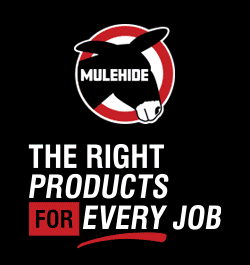



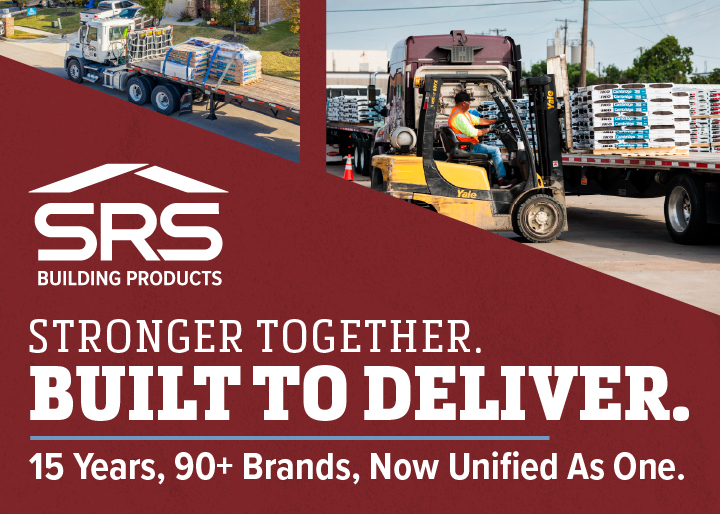
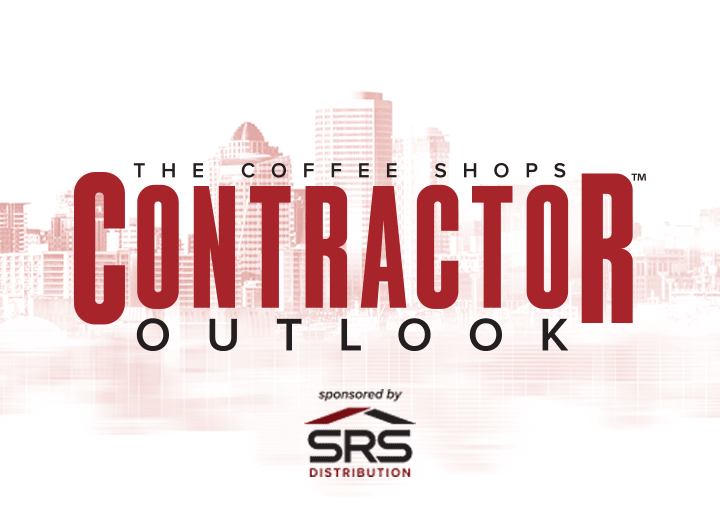

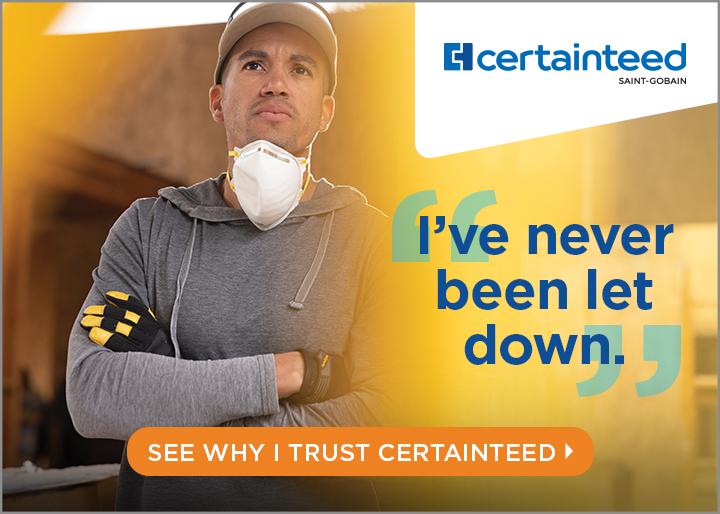

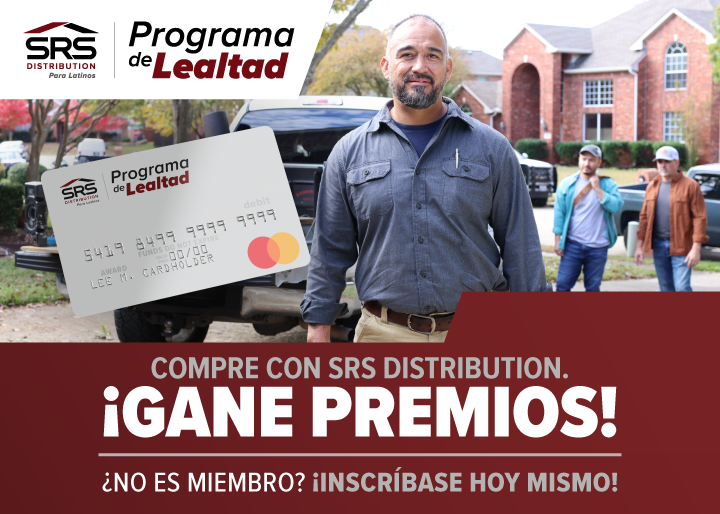
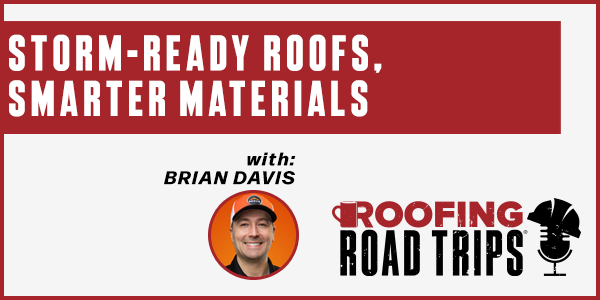

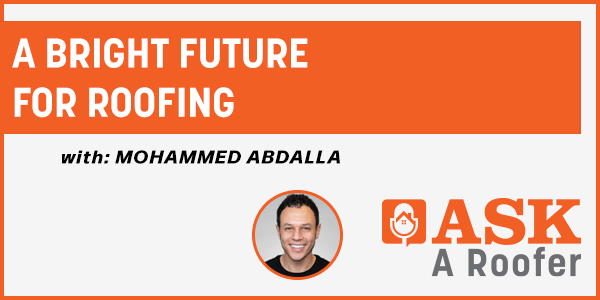



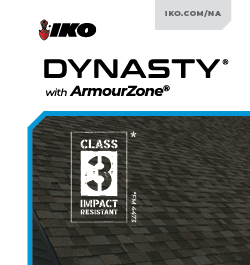


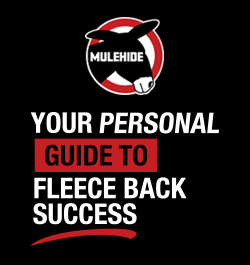
Comments
Leave a Reply
Have an account? Login to leave a comment!
Sign In